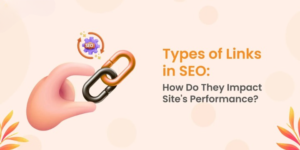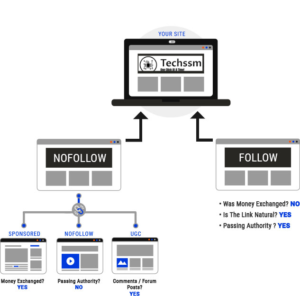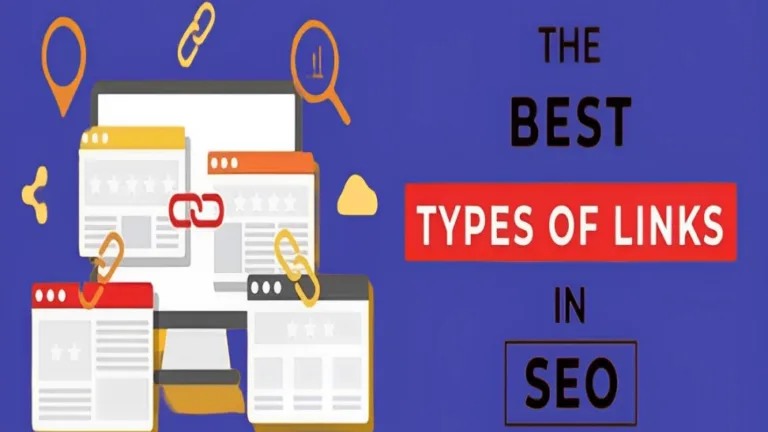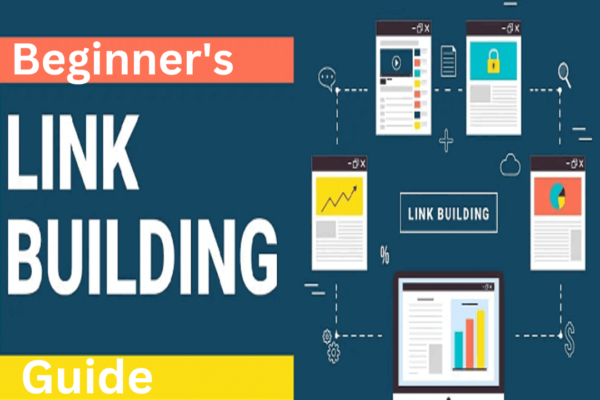Understanding the various categories of links and their technical intricacies is crucial for establishing a strong foundation in link building. This knowledge empowers you to evaluate the efficacy of different link types and determine the most advantageous ones to prioritize.
Beginning with the fundamentals of link technology, it’s essential to delve deeper into the mechanics of links. While we’ve briefly discussed the structure of links, let’s now explore this in greater depth to gain a comprehensive understanding.
Mastering Organic Link Building: The Key to SEO Success:
The majority of online links are spontaneously created, serving as essential connectors between webpages, driven by individuals’ desire to share valuable content. For SEO purposes, acquiring organic, high-quality backlinks is the ultimate objective.
Yet, it’s no easy feat.
Established brands may effortlessly attract such links due to their prominence. Consider Apple; when they unveil a new iPhone, the media buzz naturally generates links without Apple needing to solicit them.
However, for the rest of us, earning these links is a gradual process. It requires crafting compelling products or content that naturally garners attention, enticing others to link to it. While this may seem daunting, it’s not unattainable. The key lies in creating something truly remarkable that compels others to link to it willingly.
These organic links are invaluable assets, offering enduring benefits for your website’s visibility and authority. Achieving this alleviates the need for strenuous manual outreach efforts, allowing your content to speak for itself.
Editorial links:
These types of links wield significant influence similar to organic endorsements you haven’t solicited, albeit with the caveat that you must exert effort to acquire them. Let’s say, for instance, you craft an industry survey and pitch it to journalists who perceive its insights as compelling enough to feature and link back to. This exemplifies an editorially bestowed link, yet you’ve proactively pitched the content to the journalist.
Not only must you develop something deserving of links and capable of capturing the interest of your target audience, but you must also identify the appropriate audience for your content and promote it effectively. We’ll delve deeper into strategies for accomplishing this later on.
User-generated links:
While it’s not always the scenario, these kinds of links often originate from sources deemed of inferior quality, typically not meeting Google’s criteria for valuable endorsements. This stems from the fact that they’re self-created, essentially self-promoting, which doesn’t align with Google’s standards for determining the most deserving websites for top rankings.
Because these links lack editorial validation, they inherently possess lesser significance compared to other link types. While they might have been effective for some SEO practitioners in the past, exercising caution in their utilization is paramount today. Many such tactics have been targeted by Google over time, leading to penalties for websites that overuse them.
Examples of such links include:
- Unmoderated blog comments
- Press releases with excessively optimized anchor text
- Article directories
- Guest post signatures with overly optimized anchor text
- Advertorials
- Embeddable widgets
- Infographic embeds
- User profile pages
- Guestbooks
- Forum signatures
- Unmoderated directories
The selection of links to pursue in your strategy should be guided by your current link profile. However, as a general rule, steering clear of links that lack editorial validation is advisable. Instead, prioritize tactics that earn you editorial links, enriching both your website and your business.
Question: How can one distinguish between editorially given links and self-created ones when devising an SEO strategy?
AMANDA MILLIGAN, FRACTL
“We meticulously monitor the quantity and quality of our acquired links, including their source and Domain Authority. We distinguish between links obtained through outreach efforts and those obtained organically.
Additionally, we closely monitor the presence of nofollow links and co-citation links, considering them as indicators of authority in the eyes of Google.”
The nofollow link attribute:
In the world of web links, there’s a special attribute known as “nofollow.” This attribute doesn’t affect your browsing experience as a user, but it plays a crucial role in the code of the link. When you see rel=”nofollow” added to a link in the HTML code, it’s a signal to search engines, particularly Google, not to pass any PageRank through that link to its destination URL. Essentially, it’s a way of telling Google not to trust or count that link for ranking purposes. However, Google might still consider it for other purposes.![]()
Now, why would a website use the nofollow attribute? One common scenario is when a website doesn’t have full control over the links added to its pages. For instance, forums, blog comments, or even editable wiki pages are places where users can freely add links. Given the sheer volume of such user-generated content, it’s impractical to monitor each link manually. To prevent link spammers from exploiting the site’s PageRank, the nofollow attribute is often applied to all user-generated links.
Additionally, advertisers may use the nofollow attribute on paid links, such as advertising banners. By doing so, they ensure that these links don’t influence organic search rankings. The rationale is simple: organic search results shouldn’t be skewed by paid advertisements on other websites.
Question: How does the “nofollow” attribute impact the way search engines like Google treat links, and what are its primary purposes in online content management?
The evolution of nofollow:
Previously, links adorned with the nofollow attribute were dismissed, seemingly having no sway over organic search outcomes. However, they weren’t entirely futile. As discussed earlier, links offer additional perks, such as directing traffic to your site, a perk that persists even with a nofollow tag.
This stance underwent a shift in 2019 when Google broadened its interpretation of nofollow links and introduced two novel attributes:
- rel=”sponsored” – signaling to Google that a link was procured through payment, like an advertisement or advertorial.
- rel=”ugc” – for webmasters overseeing forums or blog comments.

Concurrently, Google declared that it would consider all three attributes as “hints” regarding which links to include or exclude from organic search rankings. Essentially, Google transitioned from disregarding nofollow links to acknowledging they might hold weight.
In terms of its impact on your efforts, fixating on these attributes shouldn’t consume you, as there’s value beyond them. For instance, if offered the chance to feature a link on a highly-trafficked, highly relevant website potentially driving customers your way, declining solely because it’s nofollow would be unwise.
That being said, it’s prudent to familiarize yourself with these attributes and strive to diversify your link portfolio. Whenever feasible, prioritize targeting websites capable of providing links likely to confer value.
Question: How has Google’s evolving interpretation of nofollow links impacted your approach to link building strategies?
Risky vs. non-risky links:
Some links can pose risks to your website’s ranking if they’re obtained through strategies that violate search engine guidelines. Leading search engines employ teams dedicated to detecting websites engaging in manipulative practices to influence search results unfairly. Here, we’ll explore various link building approaches from a risk assessment standpoint and provide examples of different tactics.
Staying within Webmaster Guidelines:
Effective link building strategies adhere to guidelines set by search engine giants like Google and Bing, minimizing the risk of penalties while maintaining or even boosting traffic.
Some examples of these secure tactics include:
- Crafting original, valuable content that resonates with your audience.
- Cultivating an authentic and engaged community that actively participates on your platform.
- Personalized outreach to relevant individuals, ensuring genuine connections and interactions.
- Implementing scaled approaches, such as targeted emails to a select group, rather than mass messaging.
Are you prioritizing safe link building tactics to safeguard against potential penalties and establish long-term assets for your website?
Riskier tactics that are outside Webmaster Guidelines:
These strategies aim to capitalize on vulnerabilities within search engine algorithms, artificially elevating website rankings beyond their merit. They are explicitly flagged in Webmaster Guidelines as unacceptable practices, potentially resulting in punitive measures against offending websites.
Examples include:
- Purchasing links: compensating individuals to link back to your site.
- Embedding hidden links into external websites by exploiting security vulnerabilities.
- Excessive use of keyword-centric anchor text in link-building endeavors, particularly when executed on a large scale.
However, do these tactics actually yield sustainable results?






Howdy! techssm.com
Did you know that it is possible to send appeals wholly legitimately? We present a new unique method of sending commercial offers through feedback forms.
Since Feedback Forms messages are deemed essential, they won’t be seen as spam.
Take advantage of our free service!
We can transmit up to 50,000 messages in your behalf.
The cost of sending one million messages is $59.
This letter is automatically generated.
Please use the contact details below to get in touch with us.
Contact us.
Telegram – https://t.me/FeedbackFormEU
Skype live:feedbackform2019
WhatsApp +375259112693
WhatsApp https://wa.me/+375259112693
We only use chat for communication.
Hello there!
Guess what? We’ve found a cool way to send messages that people actually want to receive! It’s totally legit and won’t get flagged as spam. We use something called feedback forms to reach out to folks with awesome offers.
And the best part? It’s completely free for you to try out! We can help you send up to 50,000 messages to spread the word about your business.
And get this – sending a massive one million messages only costs $59. Yup, you read that right!
Want to learn more? Just drop us a line using the contact details below, and we’ll get you set up in no time.
Cheers,
techssm.com